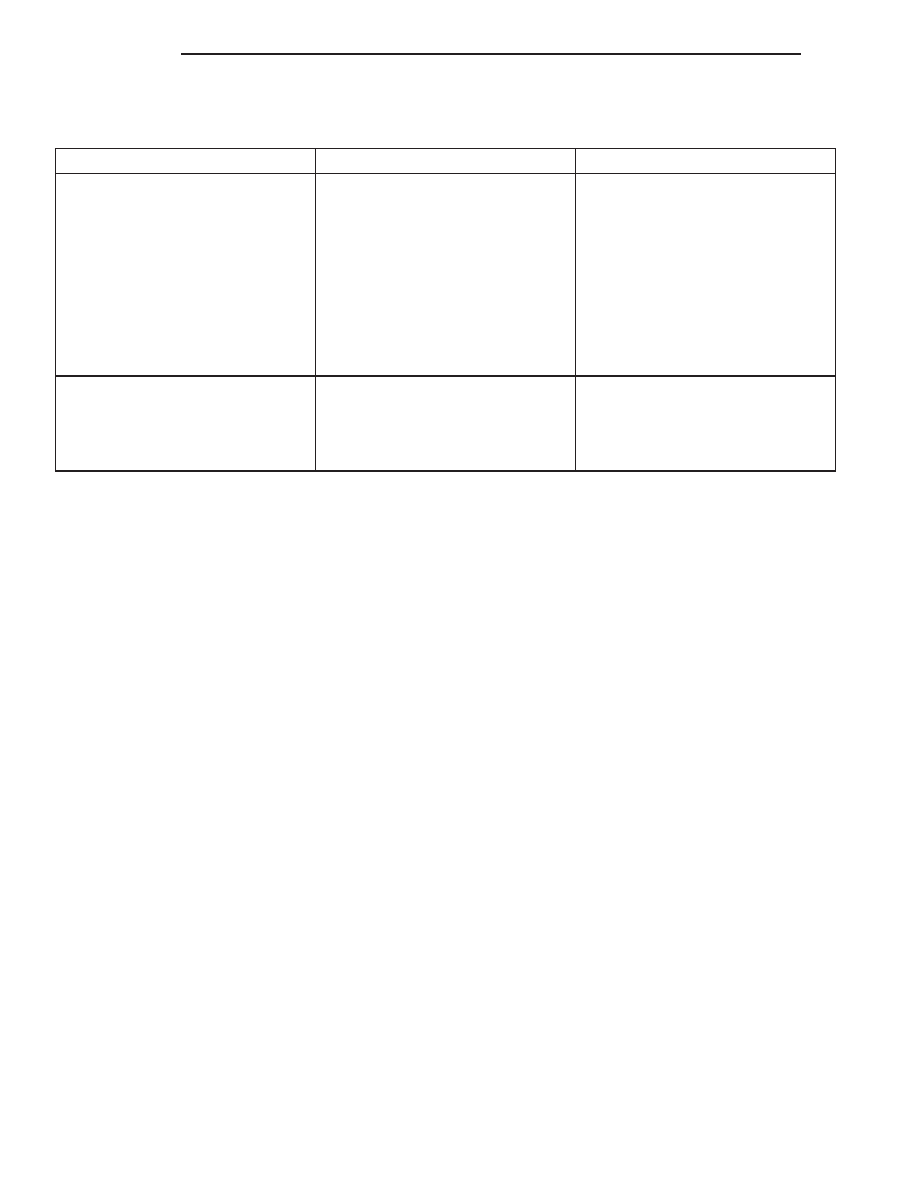Jeep Grand Cherokee WJ. Manual - part 131

DAYTIME RUNNING LAMP
CONDITION
POSSIBLE CAUSES
CORRECTION
DAYTIME RUNNING LAMPS DO
NOT WORK
1. Poor connection at DRL module.
2. Parking brake engaged.
3. Parking brake circuit shorted to
ground.
4. Headlamp circuit shorted to
ground.
5. Defective DRL relay.
6. Body controller not programed
with Canadian country code.
7. DRL relay is missing.
8. Blown fuse for DRL.
1. Secure connector on DRL
module.
2. Disengage parking brake.
3. Check cluster telltale, refer to
Group 8W.
4. Refer to Group 8W.
5. Replace DRL relay.
6. Check country code.
7. Install DRL relay.
8. Replace fuse refer to Group 8W.
Clicking or chattering when DRL is
on.
1. Mechanical relay is installed in
the junction block.
1. Ensure that the DRL relay is
installed in the proper socket in
junction block, and that no
mechanical relay exists in the low
beam socket.
AUTO HEADLAMP SENSOR (AHL)
DESCRIPTION
The auto headlamp sensor is the key sensor for the
auto headlamp system. The sensor needs real sun-
light to properly register the light level. When auto
headlamps are enabled indoors, the headlamps may
be turned on. The sensor is located in the center of
the defroster grille at the base of the windshield.
OPERATION
There are no faults set in the Body Control Module
(BCM) for a bad or missing AHL Sensor. Symptom of
a missing sensor or unconnected sensor would be
that the Headlamps and Parklamps turn on when
the vehicle is started and there is a high level of
ambient light present (ie. daytime). Auto headlamps
should not function in the presence of daylight.
ADJUSTMENTS
VEHICLE PREPARATION FOR LAMP
ALIGNMENT
(1) Verify headlamp dimmer switch and high beam
indicator operation.
(2) Correct defective components that could hinder
proper lamp alignment.
(3) Verify proper tire inflation.
(4) Clean lamp lenses.
(5) Verify that luggage area is not heavily loaded.
(6) Fuel tank should be FULL. Add 2.94 kg (6.5
lbs.) of weight over the fuel tank for each estimated
gallon of missing fuel.
8L - 4
LAMPS
WJ
DIAGNOSIS AND TESTING (Continued)